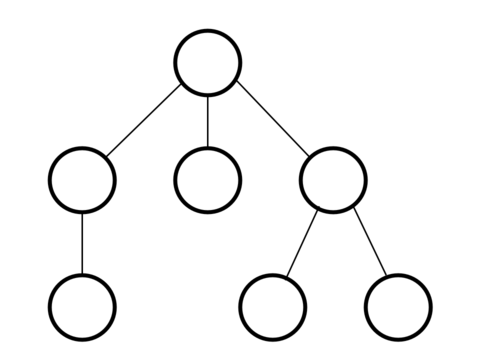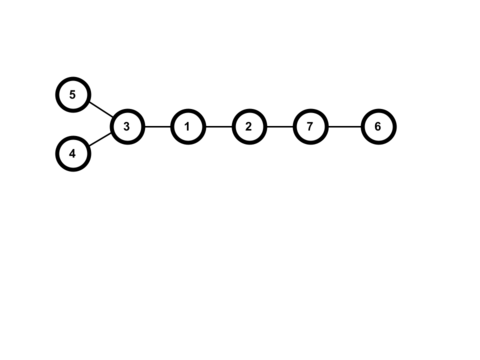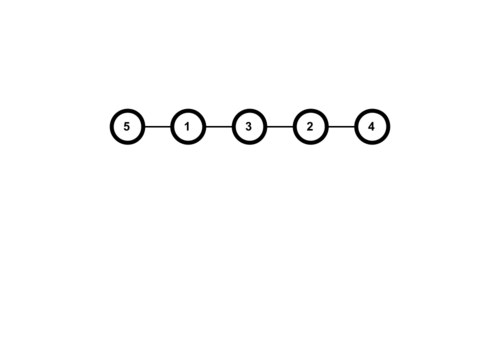| Technocup 2022 - Elimination Round 1 |
|---|
| Finished |
Lord Omkar would like to have a tree with $$$n$$$ nodes ($$$3 \le n \le 10^5$$$) and has asked his disciples to construct the tree. However, Lord Omkar has created $$$m$$$ ($$$\mathbf{1 \le m < n}$$$) restrictions to ensure that the tree will be as heavenly as possible.
A tree with $$$n$$$ nodes is an connected undirected graph with $$$n$$$ nodes and $$$n-1$$$ edges. Note that for any two nodes, there is exactly one simple path between them, where a simple path is a path between two nodes that does not contain any node more than once.
Here is an example of a tree:

A restriction consists of $$$3$$$ pairwise distinct integers, $$$a$$$, $$$b$$$, and $$$c$$$ ($$$1 \le a,b,c \le n$$$). It signifies that node $$$b$$$ cannot lie on the simple path between node $$$a$$$ and node $$$c$$$.
Can you help Lord Omkar and become his most trusted disciple? You will need to find heavenly trees for multiple sets of restrictions. It can be shown that a heavenly tree will always exist for any set of restrictions under the given constraints.
Each test contains multiple test cases. The first line contains the number of test cases $$$t$$$ ($$$1 \leq t \leq 10^4$$$). Description of the test cases follows.
The first line of each test case contains two integers, $$$n$$$ and $$$m$$$ ($$$3 \leq n \leq 10^5$$$, $$$\mathbf{1 \leq m < n}$$$), representing the size of the tree and the number of restrictions.
The $$$i$$$-th of the next $$$m$$$ lines contains three integers $$$a_i$$$, $$$b_i$$$, $$$c_i$$$ ($$$1 \le a_i, b_i, c_i \le n$$$, $$$a$$$, $$$b$$$, $$$c$$$ are distinct), signifying that node $$$b_i$$$ cannot lie on the simple path between nodes $$$a_i$$$ and $$$c_i$$$.
It is guaranteed that the sum of $$$n$$$ across all test cases will not exceed $$$10^5$$$.
For each test case, output $$$n-1$$$ lines representing the $$$n-1$$$ edges in the tree. On each line, output two integers $$$u$$$ and $$$v$$$ ($$$1 \le u, v \le n$$$, $$$u \neq v$$$) signifying that there is an edge between nodes $$$u$$$ and $$$v$$$. Given edges have to form a tree that satisfies Omkar's restrictions.
2 7 4 1 2 3 3 4 5 5 6 7 6 5 4 5 3 1 2 3 2 3 4 3 4 5
1 2 1 3 3 5 3 4 2 7 7 6 5 1 1 3 3 2 2 4
The output of the first sample case corresponds to the following tree:

The output of the second sample case corresponds to the following tree:

| Name |
|---|




